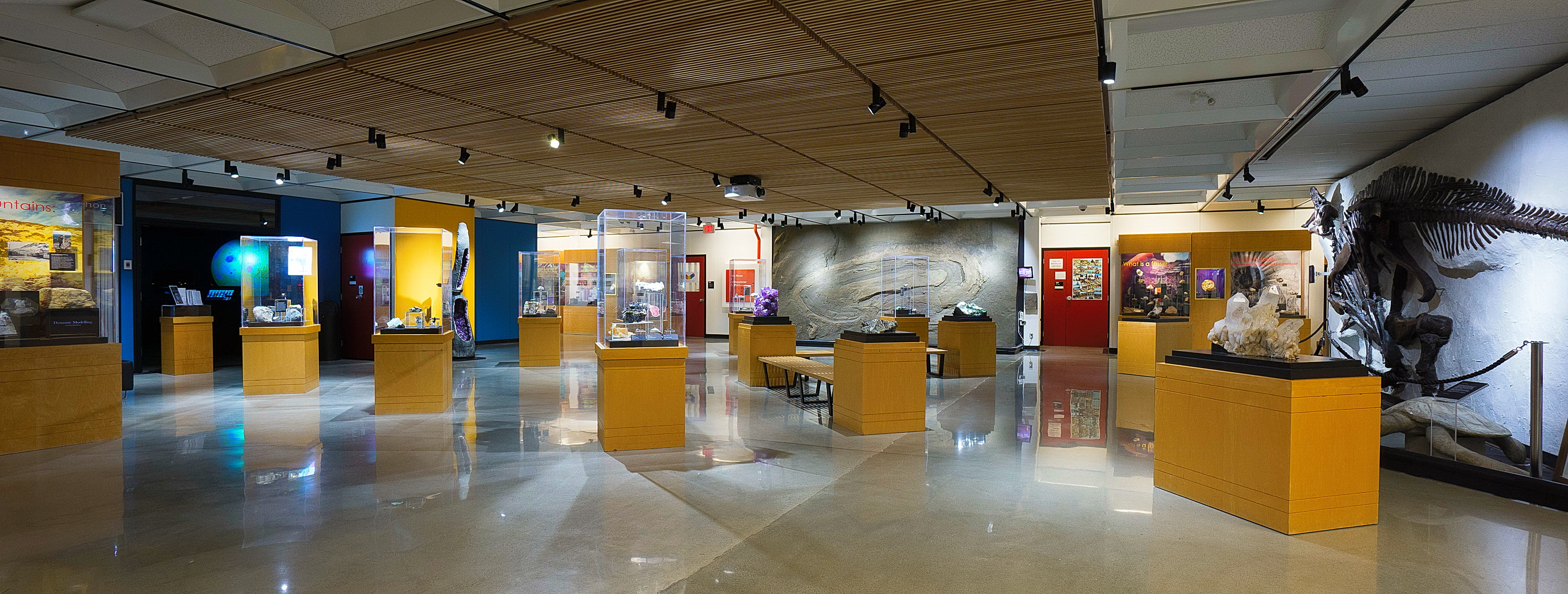Education Facilities and Resources
Supporting students' pursuit of excellence with state-of-art field, museum, lab and learning facilities.
The UBC – Teck Geological Field Station
The new UBC – Teck Geological Field Station is on a 36-hectare site near the town of Oliver in the Okanagan Valley of south-central British Columbia. This amazing facility, newly upgraded in time for May 2021, will ensure that the geological field school can continue to be based in the southern Okanagan for decades to come. It will also make possible a wide range of new opportunities for both educational and research purposes by UBC and others, in the Earth and environmental sciences.
To learn more about the UBC – Teck Geological Field Station, click here.
The Pacific Museum of Earth
The PME has provided an educational window all forms of Earth and planetary sciences since 1925. We are one of the main public outreach venues at the university and we continue to engage with the University community as well as public and school aged students. The interdisciplinary nature enables educational and inspirational programs and facilities to support learning in all contexts about fundamental science and its linkages to topics of environmental, economic, and societal importance.

Pacific Museum of Earth main gallery
PC Computer Labs
The department maintains two PC labs for the use of department members, particularly undergraduate and graduate students who need PC access for courses. These labs are for registered users only and require a small charge to cover printing.
EOS Learning Centre
The EOS Learning Centre, in the EOS-main building, room 208, is an open space for students to study and work together.
ECAC – Earth Course Assistance Centre
The ECAC help centre is located just off the main Pacific Museum of Earth gallery space in room 109 of the EOS main building. It is set up mainly to provide one-on-one assistance for students taking select first-year EOSC courses.
Books by Department Authors
- Burch, Sarah; Sara Harris: Understanding Climate Change: Science, Policy, and Practice (2014).
- Harris, Sara: Student Generated Concept Sketches for learning, feedback, and assessment in large classes. In Jonathan M. Golding and Catherine Rawn (Eds.), Strategies for Teaching Large Classes Effectively in Higher Education (2018).
- Hsieh, William: Machine Learning Methods in the Environmental Sciences (2010)
- Ivanochko, Tara: Think, Do, and Communicate Environmental Science (2021)
- Nemetz, Peter; Margot Young; Philippe Tortell: Reflections of Canada: illuminating our opportunities and challenges at 150+ years (2017)
- Russell, Kelly: Silicate Melt Viscosity Calculate
- Steyn Douw: Introduction to Atmospheric Modelling (2015)
- Stull, Roland: Practical Meteorology: An Algebra-based Survey of Atmospheric Sciences
- Tortell, Philippe: Editor: An Insider’s Guide to a Rapidly Changing Planet (2020)
- Tortell, Philippe; Mark Turin; Margot Young: Memory (2018)
State of Art Classrooms
- Many smaller class sizes in EOS-Building Rooms 135, 101, 105, 107.
- Newer spaces in ESB the Earth Sciences Building
Lab spaces and facilities for studying rocks, minerals and fossils
Our lab spaces are slated for significant upgrade in the next couple of years. These will become state-of-the-art spaces for studying bulk samples, hand specimens, thin-section slides under various lighting conditions, microscopic structures, features and crystalline properties, etc.
Computing clusters and access to cloud computing capacity
The computing capabilities in EOAS are second to none, with access to facilities from supercomputer, cloud computing resources and clusters or parallel processing, to individual machines for developing programing, mathematical, visualization and data processing skills.
